minimally invasive dentist
Quality dental care
charlotte, nc dentist
AnushA Chintala, DMD
Paul Plascyk, D.D.S.
"Drill as little as possible."
Minimally Invasive Preventive:
In our opinion, the best dentistry is no dentistry at all. Although dentists can now do some amazing things for our patients, there is nothing better than healthy, undisturbed, natural tooth structure.
Preservation of tooth structure starts with a meticulous examination of the teeth and the rest of the oral structures. Early disease detection will minimize the invasiveness of the treatment that may be needed. We use state-of-the-art equipment and procedures to diagnose disease at the earliest stages for my patients. Early diagnosis and treatment prevents the need for more invasive procedures like root canals, extractions, crowns, bridges and periodontal (gum) surgery in many cases.
When drilling is necessary (cavity, crown, etc.), we want to remove as little natural tooth structure as possible. The following picture is an example of one of the conservative treatments that we perform in my office. The picture shows a porcelain crown on a tooth. The pink dots by the gum line show where a crown margin would typically end. The green dots show where this crown margin ends. By keeping the crown margin away from the gum line (when possible), we did not have to remove the healthy tooth structure between the two sets of dotted lines.
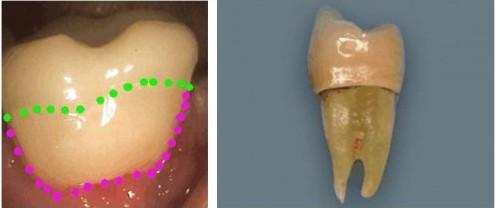
A minimall invasive crown (left). Traditional crowns (right) require
extensive tooth coverage (extracted tooth with traditional crown).
When the nerves of teeth do become infected with bacteria from a cavity, we can perform treatments that avoid root canal procedures (click) for our Charlotte North Carolina area patients.
Early detection of cavities prevents extensive drilling on the teeth to treat a cavity. The following show minimally invasive fillings placed on teeth because the cavities were detected early.
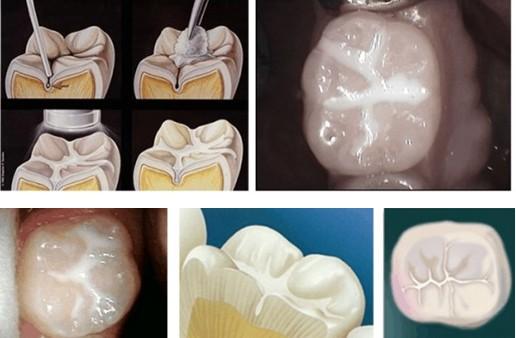
When cavities are detected late, more aggressive drilling needs to be completed to treat the tooth (see below). If the decay is advanced enough, the tooth will need a crown or even a root canal.
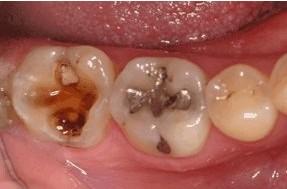
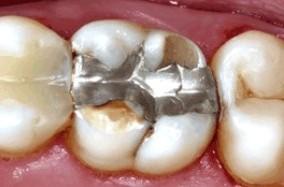
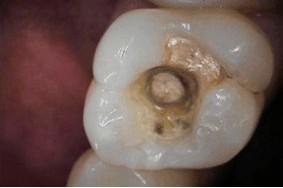
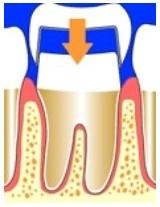
More tooth structure needs to be removed
if a crown needs to be placed on the tooth (above).